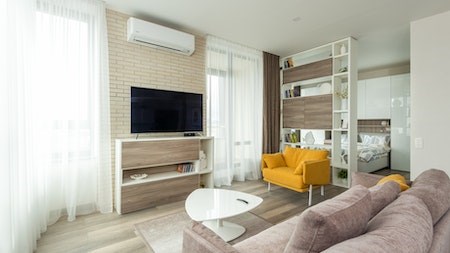Recently, Australian social media lit up with a matter related to an email a female tenant received from the letting agent, who informed her to ‘clean up’ the home she is renting in preparation for a home inspection by the owner. Whilst this may be a case of ‘he said, she said’, what stood out very strongly was how the tenant felt about the property. She made the statement that: ‘We don’t live in a display home, this is OUR home, so there will be washing piles and sometimes makeup on the bathroom counter …. it is our HOME’, she emphasised!
WATCH : How to prepare for the stressful task of moving home.
This is an aspect of renting that few consider. Technically it is not her house, but she is right; it is her home for as long as she is able to pay her rent and meet her tenant obligations. This highlights the emotional attachments to a property that a renter may feel. Obviously, there are those that are detached, viewing the property as simply a place to live, but there is a percentage of this demographic that feels their rental property is their home. There are cases of people renting the same property for decades because they are attached to the environment, and for the landlord, this is a perfect scenario.
The emotional attachments that renters develop are often relative to memories, for it may be that the property has hosted celebratory events such as birthdays, anniversaries, and memorable dinners. Perhaps it is here that they became engaged or had their first child. It could also be a place of sanctuary. Memories create links that are hard to break, and some psychologists suggest that, to some extent, these memories will keep a person rooted, even if it is time to move on.
Generally, landlords are content to have long-term tenants, but when it is time to move the tenant out, perhaps because a family member needs to use the rental property or it’s time to move granny into the flat, the tenant can be left heartbroken. They will feel as devastated as they would if it were a property they owned and was forced to sell. Remember that eviction ranks very high, along with other high-stress events like marriage and divorce.
A large part of the emotional experience of moving out of a long-term rental may relate to how a lessee has put their own personal stamp on a property, which may be as simple as wallpaper, adding an unusual paint colour, or installing blinds or even more extensive things such as adding a door or rails. This would have been agreed to with the landlord on the understanding that the tenant forgoes the right to claim the costs thereof when the time comes to leave. Ultimately a rental property has to be returned in the same condition that the lessee found it, but if the tenant does require certain changes and the landlord agrees, all financial obligations and ownership of tenant-installed fixtures should be clarified in writing.
The landlord’s emotions
When a long-term renter who is emotionally attached to a property has to leave, landlords may also experience waves of emotions such as guilt, even shame and sadness. This may arise from the idea that, somehow, they are failing this tenant because the renter has depended on them to provide the roof over their head. The problem is that landlords often can’t help becoming attached to long-term good tenants, and if the eviction relates to the tenant’s inability to pay the rent or afford an increase, these emotions are exacerbated.
For both landlords and their tenants who are in this situation, there is a philosophical concept that may assist in being able to move past the attachments and emotions in play. When we lose something, we feel sadness; it is a natural effect. Children grow up and leave the nest, we grow up and leave behind childhood, and we eventually lose those we loved (and ourselves) to old age. The point being made is that life is temporary and so too is the house or home you live in. While you have something, experience its pleasures, say philosophers.
Moving on means letting go, and hopefully, a tenant, or a landlord for that matter, can think of this in a more positive light. Such would be concentrating on the new changes that are to manifest in the future. Another aspect is that as a tenant begins to pack, the property begins to feel less like the home they created with their beloved items - this is called depersonalising. Thoughts should also be directed to the new home and the decorating to come.
While it may not be easy to detach, taking the time to reflect on how a property has served its purpose is good; keeping this perspective allows us to see beyond ourselves and be active in the process of change.
Writer : Kerry Dimmer




